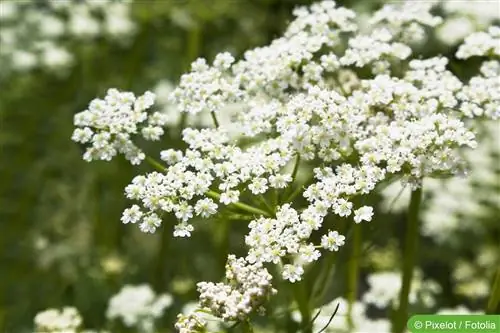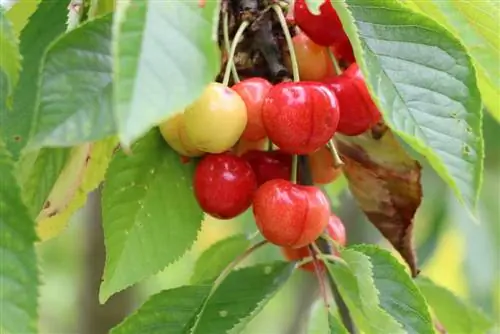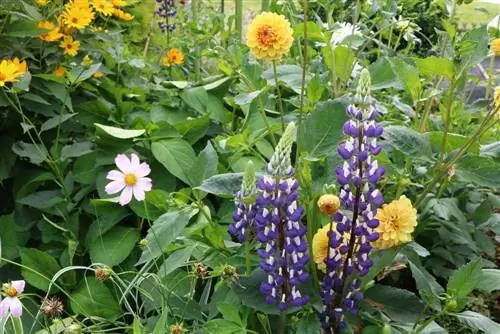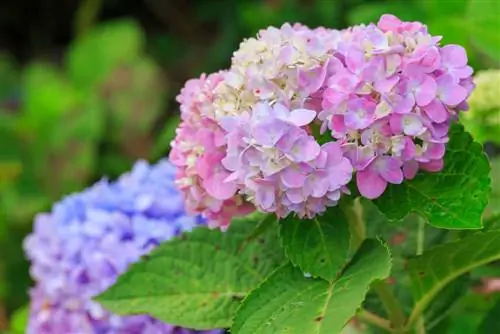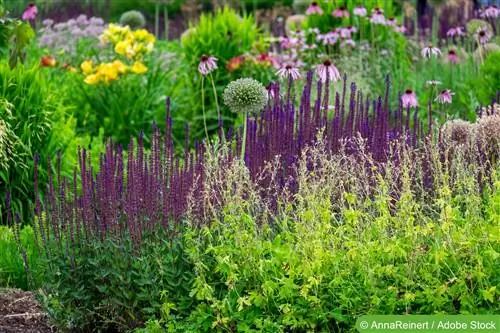- Author admin [email protected].
- Public 2023-12-17 03:39.
- Last modified 2025-06-01 06:48.
Cumin is a spice that should not be missing from any good kitchen. It brings a very special aroma to many dishes and sometimes even makes them more digestible thanks to its positive properties. Because caraway - or botanically Carum carvi - reduces the formation of gases in the intestines, so that less flatulence and indigestion can occur.
This can be particularly important for dishes containing cabbage and other flatulent ingredients. The spice also reduces gallbladder and liver problems and can even help with asthma.
Cultivation
Growing caraway seeds is quite easy. If you find a suitable place in your garden for this great spice, you shouldn't be afraid to grow caraway seeds. The spice is very undemanding and easy to care for. It actually grows everywhere. No matter whether you have a large or small space ready. Just make sure that caraway likes it sunny or at least partially shady. You should also find a place protected from the wind so that the caraway seeds cannot be blown away in gusts of wind. Always keep the soil moist and choose firm, loamy soil. Caraway only grows to a limited extent in sandy soil. Tip: If you have sandy soil in your garden, replace a small area with topsoil. Since the caraway doesn't require a lot of space in the soil, this shouldn't be too much trouble and there won't be a high cost factor either.
Sowing
When choosing the right seed, always make sure that you choose “black cumin” or “true caraway”. You can get this in any specialist seed shop. If you have already grown caraway before, you can also take the seeds from these plants. Just don't resort to the caraway seeds you get in the supermarket. In many cases it doesn't grow quite as well. You can start sowing in early spring. Once the frost is over, you can start sowing in March. You should really have the seeds in the ground by the end of April at the latest so that everything stays within a manageable time frame. Before you plant the seeds about two centimeters deep in the soil, you should improve the soil with some compost. Don't forget to water regularly. Not even when the weather is still quite mixed and the temperatures are cool. After about one to three weeks you will be able to see the first small plants. Please pay attention to the following things when sowing:
- the soil must be completely thawed before sowing
- the rows should be at least 30 cm apart
- The seeds must not be placed deeper than 2 cm in the soil
- keep the seeds moist at all times
- when the first plants are visible, the rows need to be thinned
Tip:
You should mix the compost into the soil about two weeks before sowing so that it can be well incorporated there. If you are unable to use the spring for sowing, you can do so again in July and August. The harvest will then also be postponed.
Care
Carum carvi is a biennial plant. The harvest will therefore not take place until next year. In winter, you should therefore protect your caraway well so that it does not freeze and suffer from a nutrient deficiency. Add some compost around the plant. Animal manure would also work and provide the appropriate protection. If the soil is very poor in lime, a little additional lime can help the caraway get through the winter well. Covering would also be possible at very low temperatures. Watering the plants should only be stopped when the ground is frozen. Otherwise, the plants need water throughout.
Despite the easy cultivation, the robust plant is not protected from pathogens. Bacterial diseases, downy mildew, fungi or even root rot can particularly cause problems for it. The so-called cone brandy is also possible. To combat the diseases, you can use a plant protection product that is based on rapeseed oil. It is organic and ensures that you can still eat the caraway after it has been harvested.
Harvest
The flowering period of Carum carvi is between April and June in the second year. The flowers are small and pinkish-white in color. If they then turn brown in the summer months, the flowers can be cut off the plant using a long handle. Tip: Try to keep the style as long as possible. This gives you the opportunity to tie the dry flowers together into a bouquet. This makes the further drying process much easier.
Only when the caraway has dried properly can it be filled into small jars or spice jars. But take your time with it. Because the drier the caraway is, the less chance it has of molding.
Tip:
Not only the seeds - i.e. the caraway - can be used. The leaves of caraway, for example, are based on parsley and dill. Feel free to dry them and use them for soups or salads. And the roots can also be further processed. When you cook these, they make a tasty vegetable. And if you ever want to brew something strong, then make a caraway schnapps.
Frequently asked questions
When can caraway help?
Even small babies are given preparations containing caraway to alleviate three-month colic or even common flatulence and abdominal pain. Just try caraway tea or, for acute attacks, appropriate suppositories or tablets. You will see how well caraway helps. And what helps babies and children obviously also helps adults.
Is growing caraway worth it?
Economically speaking, growing caraway is not worthwhile. But if you are growing it in the garden for your own use, then the economic side is probably of little interest. Then it's more important that you can enjoy a great spice from your own garden.
How do I get caraway seeds through the winter?
Since caraway is a biennial crop, you should surround the plants with sufficient compost or animal manure in winter. A little lime for the soil isn't bad either. In addition, regular watering should not be forgotten.
What you should know about caraway in brief
Soil preparation and sowing
- The popular cabbage spice can be cultivated on almost all soils, but prefers loamier soil types for good yields.
- With around 5 to 8 kilograms of caraway seeds, which are spread widely, you can plant one hectare of land in your own agricultural cultivation.
- In a private garden, however, you probably don't want to achieve such large harvests. Here, a few caraway seeds are sufficient for the test case.
- The caraway seeds can be sown directly into the loosened and well-prepared soil if you want to grow them in their pure form.
- It can also be used very well as an underseed in mixed crops with peas, green corn or spring barley.
- In the so-called “cover crop culture” you can even expect two harvests per year.
- The caraway seeds are sown in March, provided the soil has already thawed. It is best to sow caraway seeds in rows.
- Each row should be at least 30 cm apart from the next.
- The caraway seeds should not be covered with soil deeper than one to one and a half centimeters.
- It is also important that the caraway seeds are kept moist regularly and are not too close together.
- As soon as the first plants are visible, you have to thin them out, because if the caraway plants are too dense, the harvest result will be reduced.
Germinability and yields
Caraway is a plant that provides its seeds with a germination-inhibiting substance called carvone. Therefore, it is relatively difficult for caraway to germinate and takes a long time before it can be harvested. There are varieties of caraway seeds with higher and lower levels of this essential oil. Thanks to better germination, the varieties with a low carvone content are significantly more productive than the varieties with a high carvone content.
- After sowing, it takes one to three weeks for germination to begin.
- Ideal temperatures are between 5 °C and 20 °C.
- The location should be as sheltered from the wind as possible and sunny or partially shaded.
Tip:
The seeds can germinate for three years. So if climate change makes early sowing impossible in one year, the seeds can still be used next spring. The remaining caraway seeds are then sown in the third year.
Care and disease prevention
- Overall, the caraway plant is surprisingly easy to care for. The first sowing takes place in May, re-sowing can be carried out in July and August.
- Occasional bacterial diseases, fungal infections, powdery mildew, downy mildew, root rot and pest infestations may occur.
- You can often recognize umbel blight when the plant begins to bloom. But it can also appear later.
- The most important pests of growing caraway are caraway gall mites, caraway cockroaches, bedbugs and caraway moths.
You can tell if a caraway plant is infested by
- parsley-like leaf deformations
- visible caterpillar damage to the flower umbels
- recognizable insect infestation on the caraway plant
recognize. You don't necessarily have to take chemical measures in a private garden, but you do have to take chemical measures in agricultural cultivation.

